New York’s reputation for architectural excellence is not built on the quality of its public restrooms. Finding one is a struggle in itself: the city has only four per 100,000 people (half the national average, which itself lags far behind other countries’). If you are so lucky as to come across one, the reward is often tainted by peeling paint, shoddy signage, ominously faulty lighting, or, increasingly, a rusted padlock that prevents entry altogether. During the pandemic, the city shuttered 130 such public facilities, tightening an existing crunch.
A public restroom by Gray Organschi Architecture, completed last fall in the Bronx’s newly expanded Starlight Park, is a welcome addition to the city’s embarrassingly limited portfolio. The 1,150-square-foot gray-brick building is perched on a small hill overlooking a gleaming artifical turf field, the two conical points of its zinc-clad roof spread like the wings of a city pigeon preening in the winter sun. Approaching it from a distance across the field, the building does not immediately advertise its purpose—it could easily be transplanted to the Hudson Valley as a quirky home for a young couple relocated from Brooklyn. But two bright yellow doors on the building’s northeast lead to women’s and men’s restrooms, with the other half of the building designated for storage space and an office for park personnel.
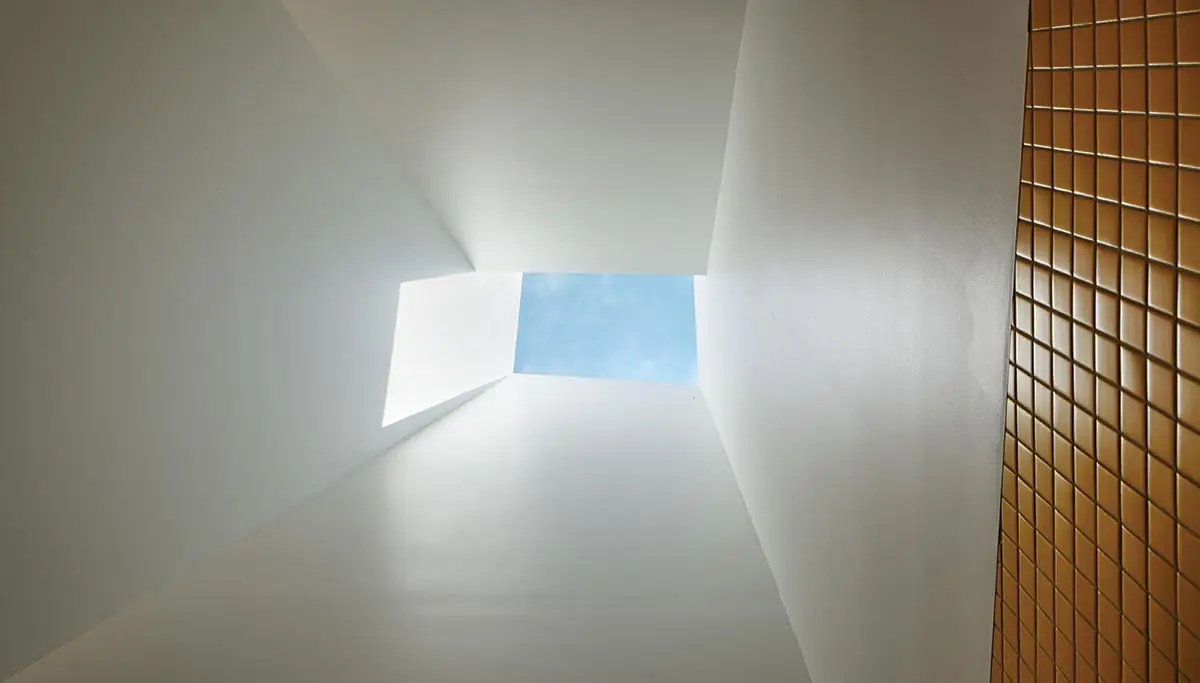
1
The project’s unusual roof shape results in vaulted ceilings capped with a small skylight (1), bringing light and air into the restrooms’ interiors (2) without compromising privacy. Photos © Jasper Lazor; click to enlarge.
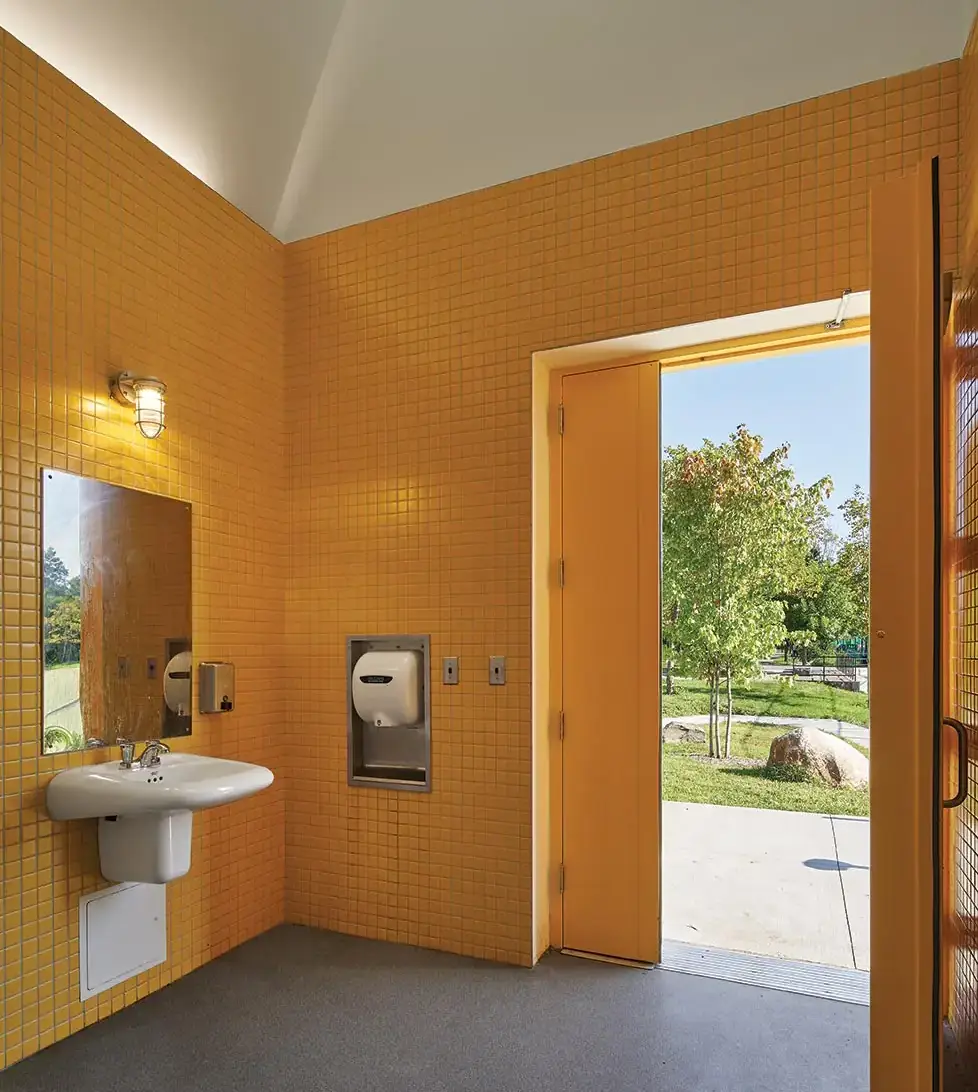
2
“We wanted to bring a celebratory scale to the project,” says Alan Organschi, who cofounded the firm 20 years ago with Lisa Gray. “There’s a tendency to downplay the presence of public toilets, but we felt that doing so would diminish the park itself.” The project’s presence and visibility aid with safety concerns but was also needed to stand up to the challenges of its setting: Starlight Park is wedged against the roaring traffic of the Sheridan Expressway, behind which tower blocks of housing projects. “There’s a sharp transition from a very urban environment to nature,” says Gray. “The building needs to help with that, so we put it in the center of the park, and let it be a marker for the public.”
The 13-acre site, which wanders along the banks of the Bronx River, was originally home to an amusement park, which operated from 1920 until its shuttering in 1940. In the 1950s, the development of the expressway served to cut off the Crotona Park East neighborhood’s access to the waterfront. Starlight Park, the final section of which opened last spring, is the result of a decades-long reparative project, and millions of dollars of city-funded cleanup and construction.
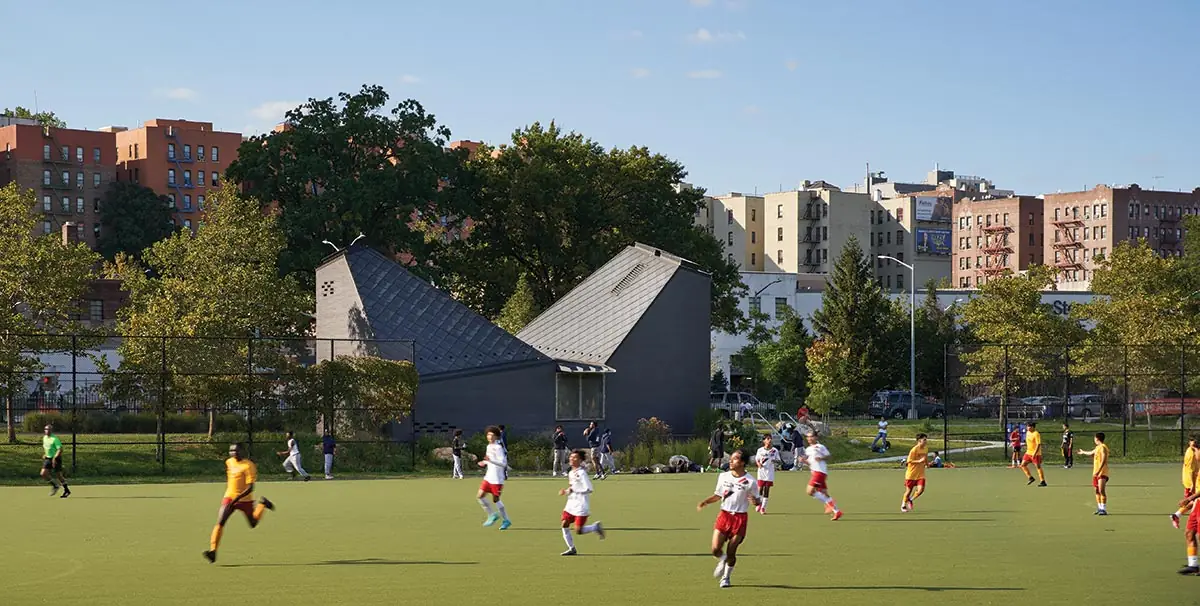
3
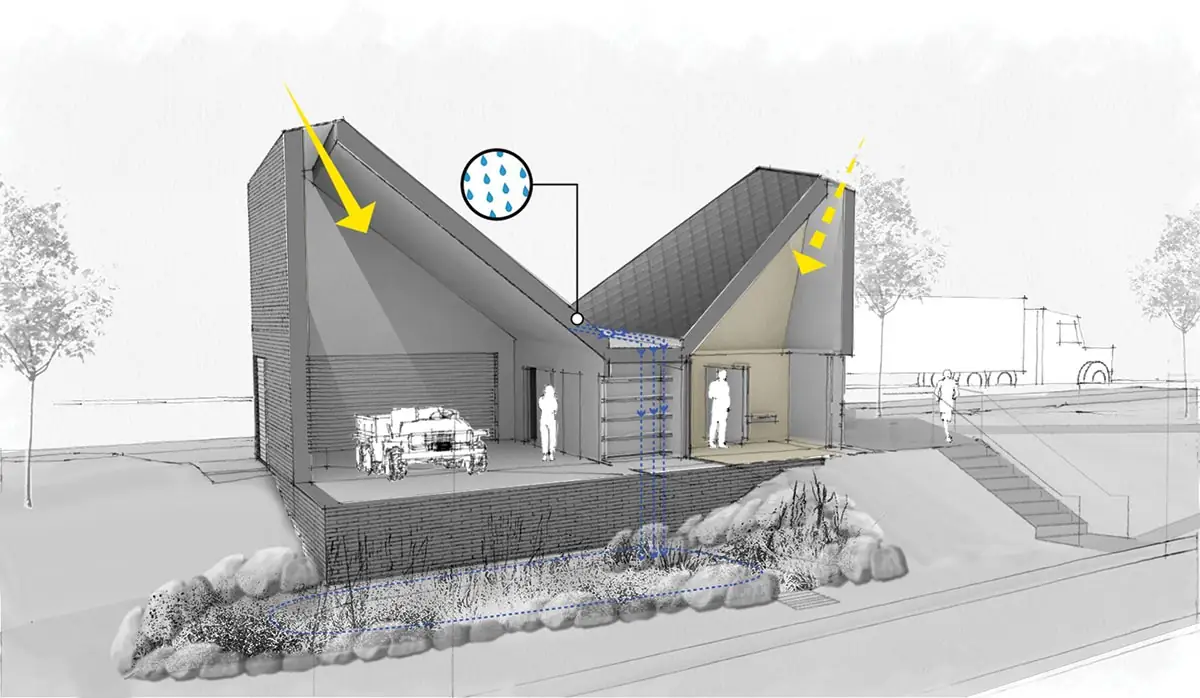
4
The project's sloping roof directs rainfall into a tumbled rock formation on its park-facing side (3 & 4) to water surrounding native plantings (5). Photos © Jasper Lazor, drawing courtesy Gray Organschi Architecture; click to enlarge
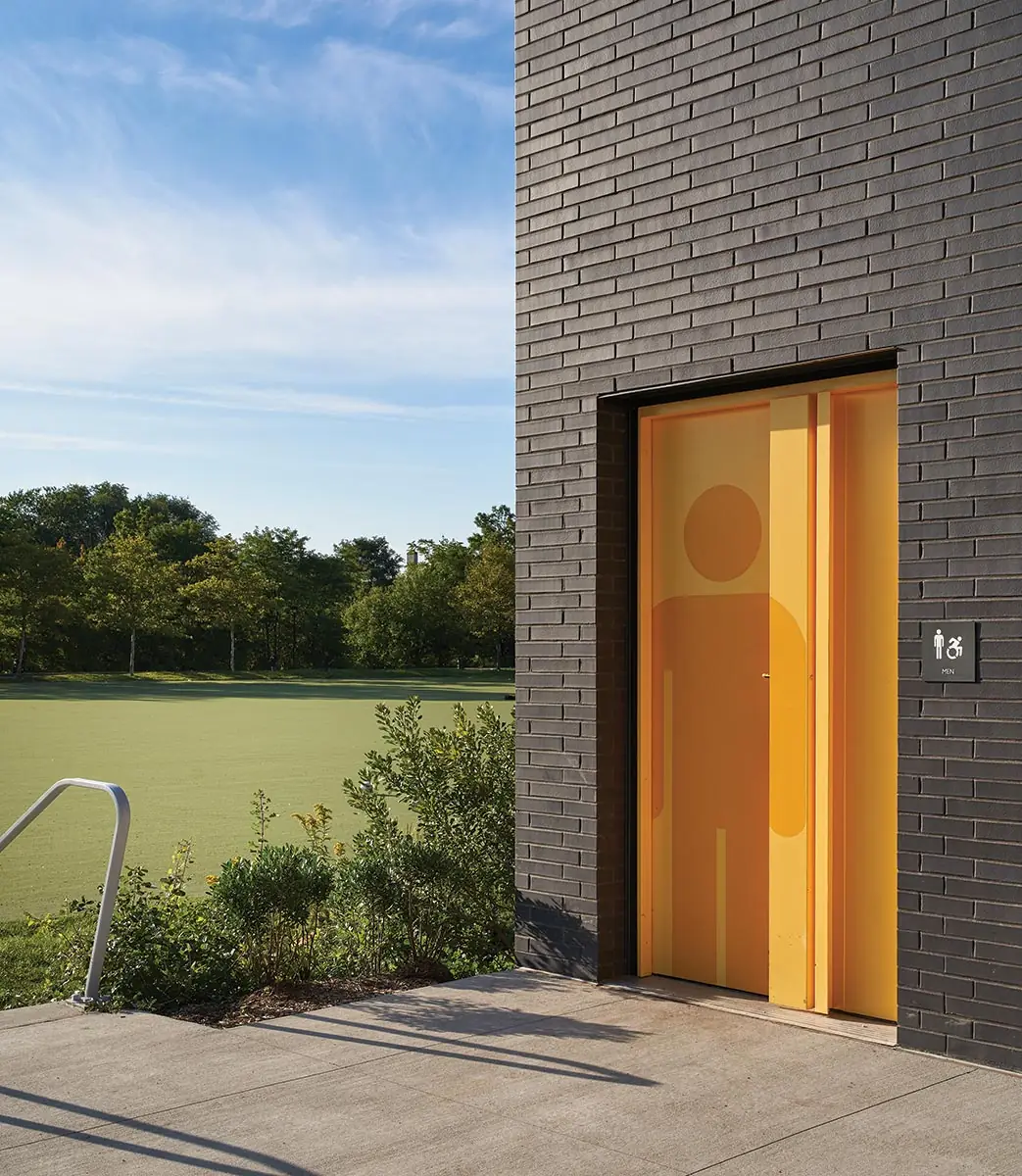
5
The restroom interiors also run contrary to the typical expectations of a city facility. Tiled in sunny yellow and an oceanic blue, ladies’ and men’s respectively, the pair of two-stall restrooms have an unanticipated airiness, courtesy of the natural light pouring in from the small skylight at the apex of the steeply pitched roof.
Despite the heightened design, accommodations had to be made in line with the budget and function of a public restroom—for instance, the reflective metal plates that substitute for mirrors. On my visit, two months after opening, the project bore no signs of vandalism, and the restrooms themselves seemed clean and well maintained, aside from the fading odor of a recently smoked cigarette.
Gray and Organschi are not naive about the project’s continued immaculacy. “There’s always a question about what’s going to happen after a public project opens—how it might get marked, you might say, by the community,” says Gray. “We hope we gave it enough identity that people might not necessarily want to change the way it looks.”
Public restrooms—often associated with the needs of the unhoused and the poor, and an ever shrinking priority in municipal budgets—represent, in more ways than one, what we’d prefer to hide away. In this context, Starlight Park’s dignified toilet is a statement of sorts, a call to bring communal needs to the fore and, hopefully, set an example as the city works to amend a severe deficiency.
Credits
Architect:
Gray Organschi Architecture — Elizabeth Gray, Alan Organschi, principals; Karen Scott, design director; Mike Krop, design lead; Noah Silvestry, Millie Yoshida, designers
Consultant:
Starr Whitehouse Landscape Architects and Planners (landscape)
General Contractor:
RENU Contracting
Client:
New York City Department of Design and Construction
Owner:
New York City Department of Parks and Recreation
Cost:
Withheld
Completion Date:
October 2023
Sources
Masonry:
Glen-Gery
Roofing:
VMZINC
Glazing:
Oldcastle BuildingEnvelope
Wall Tile:
Daltile
Flooring:
Stonhard
Toilet Partitions:
ASI Global Partitions
Paints & Stains:
Benjamin Moore
SkyLights:
Kingspan
Doors:
Steelcraft
Plumbing:
American Standard (sinks, faucets & toilets); Haws (drinking fountain)



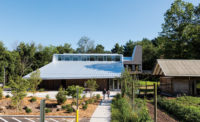


Post a comment to this article
Report Abusive Comment